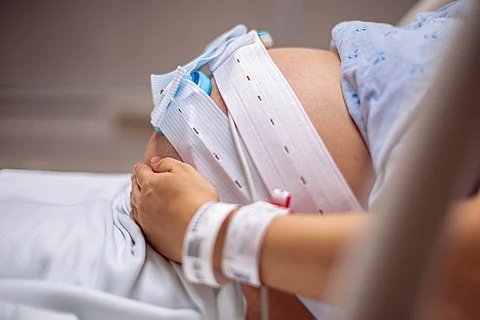

Every day in 2020, approximately 800 women died from preventable causes related to pregnancy and childbirth, equating to one death every two minutes, according to a new study released by the World Health Organization (WHO) on March 8, 2025.
In 2020, an estimated 287,000 women worldwide died from maternal causes. The study, published in the journal The Lancet Global Health, identified haemorrhage — severe heavy bleeding — and hypertensive disorders such as pre-eclampsia as the leading causes of maternal mortality globally.
According to the study, haemorrhage, which typically occurs during or following childbirth, accounted for nearly a third (27 per cent) of maternal deaths, while pre-eclampsia and other hypertensive disorders contributed to 16 per cent.
The proportion of haemorrhage-related deaths varied significantly by region, with the highest rates observed in sub-Saharan Africa, Western Asia and Northern Africa. Haemorrhage was responsible for 29 per cent of maternal deaths in Western Asia and Northern Africa and 28 per cent in sub-Saharan Africa. In contrast, in Australia and New Zealand, it accounted for 15 per cent of maternal deaths.
Maternal deaths caused by hypertensive disorders were most prevalent in Latin America and the Caribbean. The study also highlighted that most maternal deaths from haemorrhage and sepsis occurred during the postpartum period.
This report marked WHO’s first global update on maternal mortality causes since the United Nations-mandated Sustainable Development Goals (SDGs) were adopted in 2015. It noted that progress in maternal survival achieved between 2000 and 2015 stagnated in the first five years of the SDG era.
In 2020, the global maternal mortality ratio (MMR) stood at 223 maternal deaths per 100,000 live births. The study warned that the world is not on track to meet SDG target 3.1, which aims to reduce the global MMR to below 70 per 100,000 live births by 2030.
Globally, most pregnancy-related infection deaths occurred in the postpartum period, which extends up to 42 days after childbirth. A total of 111 countries reported at least one late maternal death occurring between 42 days and one year postpartum.
The study underscored the urgent need to strengthen key aspects of maternity care, including antenatal services that can detect risks early in pregnancy and prevent severe complications, lifesaving obstetric interventions to manage critical birth-related emergencies such as haemorrhage and improved postnatal care.
WHO stated that it continues to work towards enhancing access to high-quality, respectful maternal health services across pregnancy, childbirth and the postnatal period through evidence-based research and guidelines.
In 2024, WHO and its partners launched a global roadmap for postpartum haemorrhage, outlining key priorities for addressing this major cause of maternal death. The roadmap was developed through extensive consultations involving more than 130 experts from various fields.